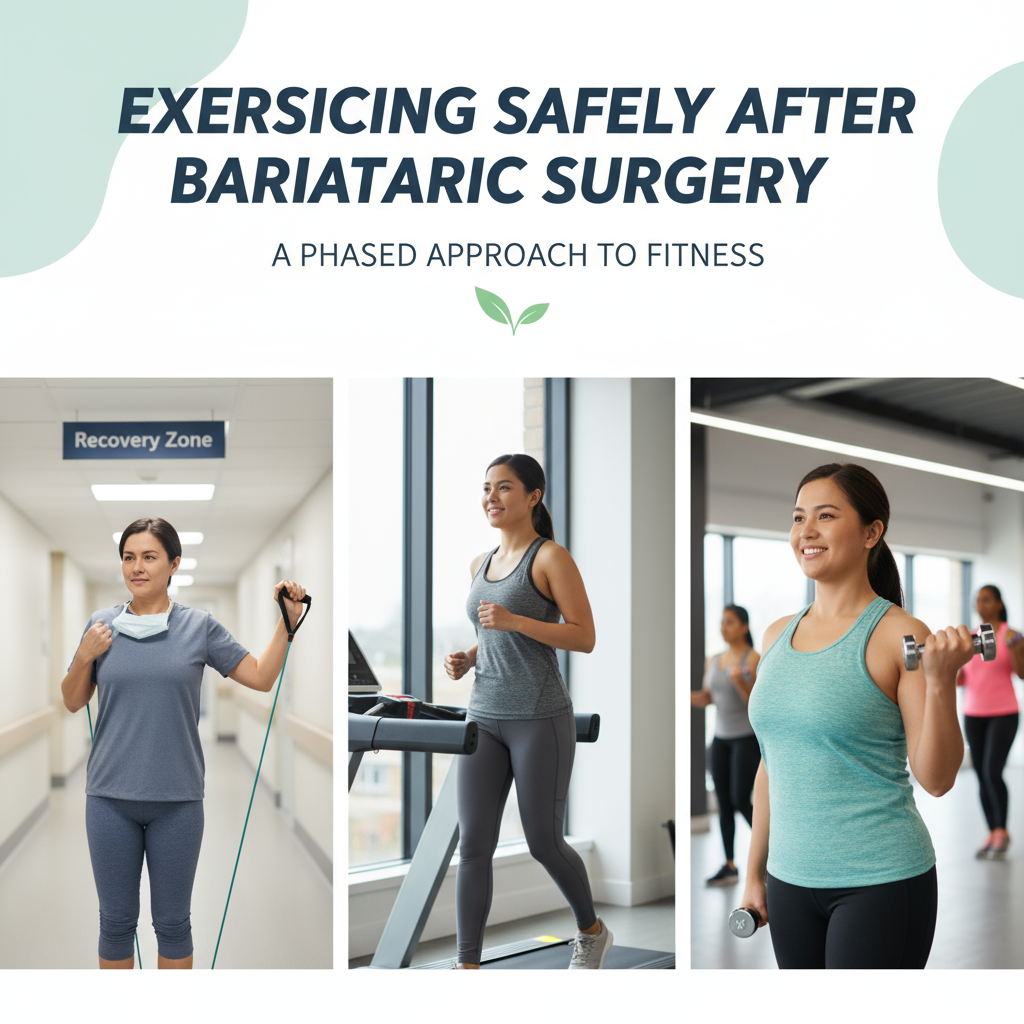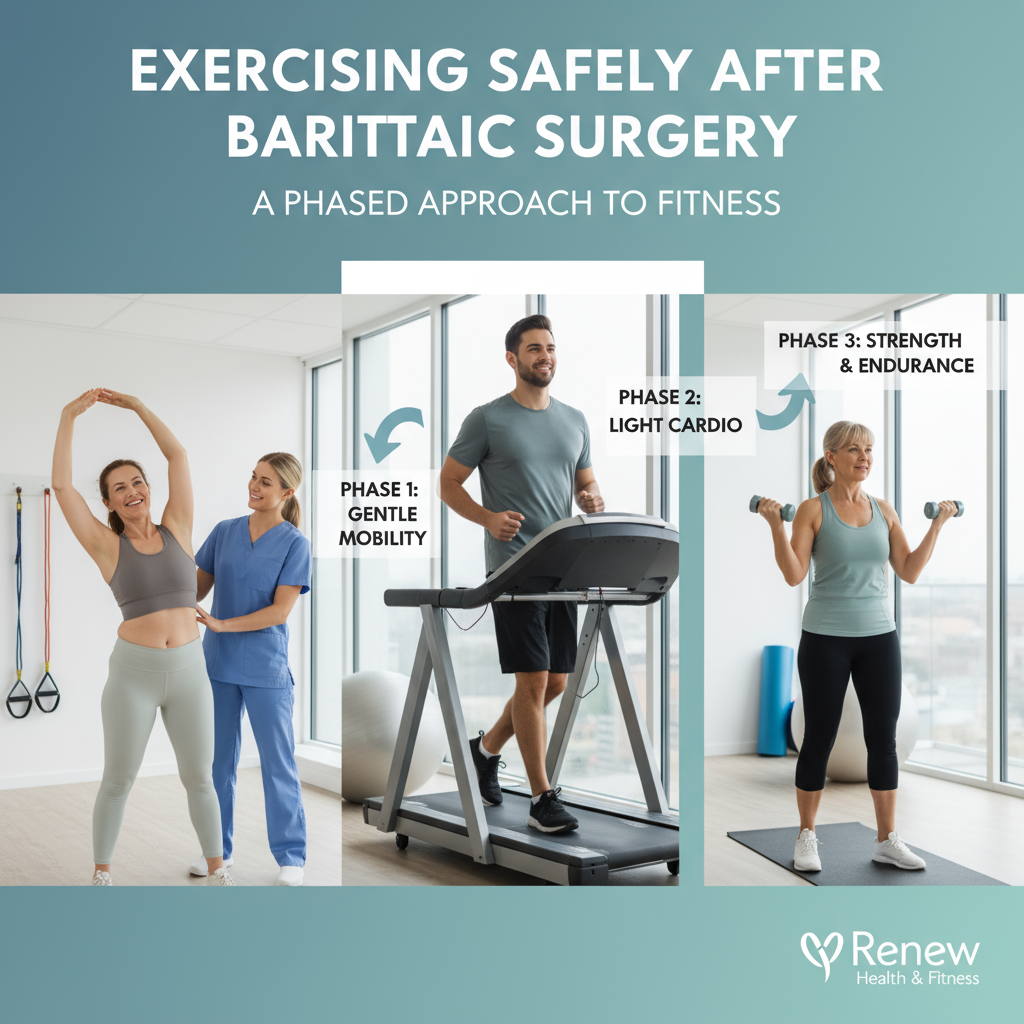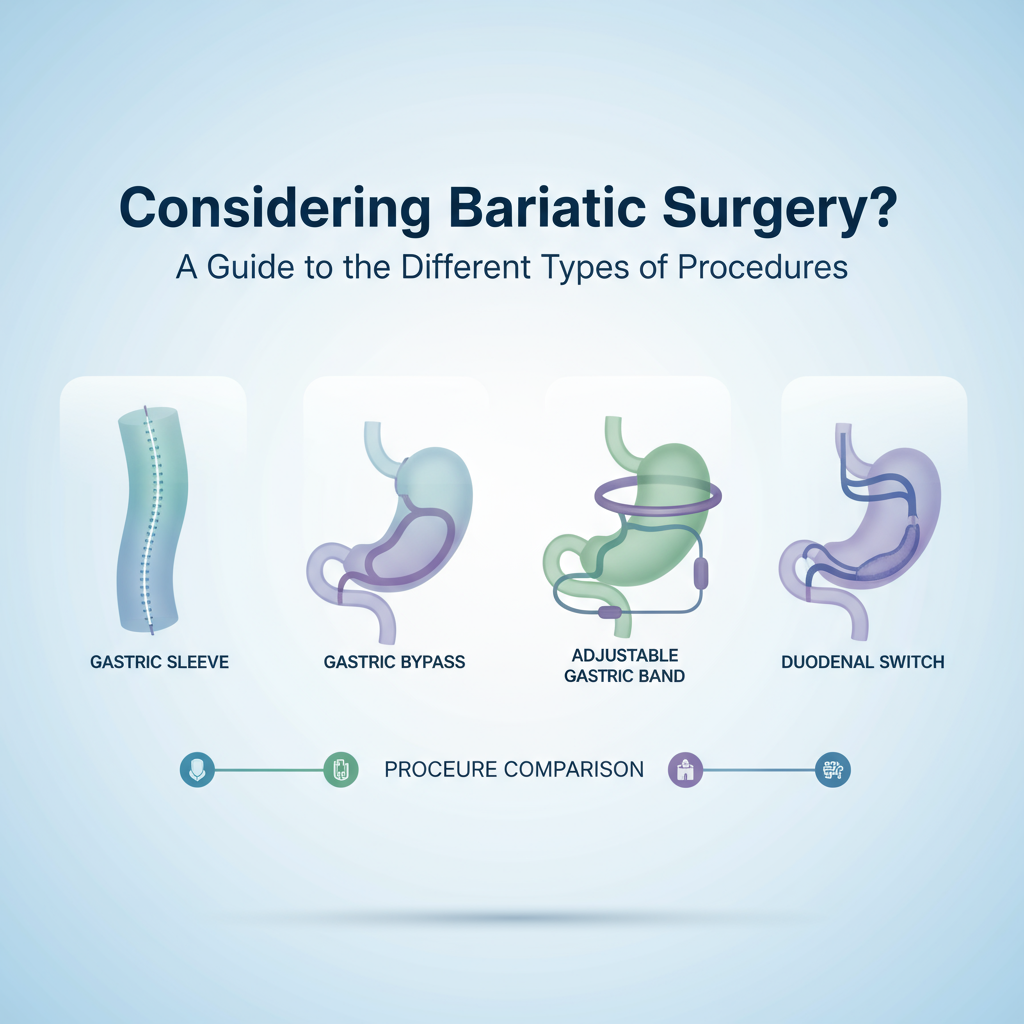Exercising Safely After Bariatric Surgery: A Phased Approach to Fitness
This guide is for bariatric surgery patients (and honestly, anyone supporting them—partners, coaches, nurses) who want a clear, safe plan to rebuild fitness after their procedure. You’re likely juggling soreness, low energy, fear of pulling a stitch, and a million social media “rules” that contradict each other. And you want results… without setbacks. If that’s you, we’ve got you—our bariatric fitness team designs phased exercise plans that match your surgeon’s protocol, watch for red flags, and guide you week by week so recovery feels steady, not scary.
Quick heads-up: always follow your surgeon’s instructions and get medical clearance for each step. Bodies heal at different speeds. That said, a structured, phased exercise plan removes guesswork and reduces risk—big time.
The 12-Phase (Week-by-Week) Bariatric Fitness Plan
Here’s a practical, safe exercise plan after bariatric surgery. Each phase shows goals, a simple daily plan, and what to avoid. You can print this, tape it to your fridge, and check off boxes. I’ve seen patients thrive with this exact structure (and yes, we tweak it for every individual).
Phase 1 — Week 1: Breathe, Walk, Circulate
Rule of thumb early on: tiny doses, repeated often. Movement is medicine for recovery.
- Goals: reduce clot risk, promote digestion, keep pain manageable, learn to listen to your body.
- Daily plan:
- Walk 5 minutes, 5 times per day. Gentle, indoor if possible.
- Use an incentive spirometer or do 10 deep breaths every waking hour.
- Ankle pumps: 20 reps, 3 times per day.
- Shoulder rolls: 10 forward + 10 back, 2 times per day.
- Target steps: 2,000 per day, if you track. If not, no stress—focus on the 5 short walks.
- Avoid: lifting anything heavier than 10 pounds, core strain, twisting.
- Stop if: dizziness, chest pain, shortness of breath at rest, incision pulling, nausea that lingers.
Pro tip: set 5 alarms on your phone for your mini-walks. Sounds silly. Works.
Phase 2 — Week 2: Extend Walks, Add Gentle Mobility
You’re still post-op fragile, but your body’s asking for a bit more.
- Goals: increase time on feet, maintain posture, keep pain low.
- Daily plan:
- Walk 10 minutes, 3 times per day. Soft surfaces help.
- Cat-cow spinal mobility: 8 slow reps.
- Neck side bends: 10 reps each side.
- Seated marching: 30 seconds, 2 rounds.
- Target steps: 3,500 per day.
- Avoid: planks, crunches, pushups, cycling with heavy resistance.
Real talk: you might feel a sudden dip in energy by Day 10. That’s common. Keep fluids and protein on point.
Phase 3 — Week 3: Walk With Purpose, Activate Core Safely
Now we layer in “deep core” without crunches. Think support, not strain.
- Goals: improve stamina, introduce gentle strength, protect incisions.
- Daily plan:
- Walk 15 minutes, 2 times per day, or 30 minutes once if you prefer.
- Diaphragmatic breathing: 5 breaths, 3 sets.
- Pelvic tilts (supine): 10 reps, 2 sets.
- Wall sit: 20 seconds, 2 sets.
- Heel slides: 10 reps per leg.
- Target steps: 5,000 per day.
- Avoid: anything that creates abdominal “coning” or incision tugging.
I’ve noticed a lot of patients feel “stir crazy” this week—adding structure helps your mind as much as your muscles.
Phase 4 — Week 4: Light Strength, Controlled Cardio
We’re building the habit. Still low intensity, just more intentional.
- Goals: begin total-body strength, maintain steady cardio, keep form crisp.
- Workout plan, 3 days this week:
- Chair squats: 10 reps, 2 sets.
- Wall pushups: 10 reps, 2 sets.
- Band rows (light band): 12 reps, 2 sets.
- Standing calf raises: 12 reps, 2 sets.
- Bird dog (short reach): 6 reps each side.
- Cardio plan, 2 days this week:
- Walk 25 minutes at easy pace.
- Target steps: 6,000 per day.
And yes, rest is a training tool—take at least 1 full rest day.
Phase 5 — Week 5: Increase Strength Volume, Introduce Intervals
This is where “I’m recovering” turns into “I’m training.” Feels good.
- Goals: stimulate muscle, preserve lean mass, keep joints happy.
- Workout plan, 3 days:
- Goblet squat with light dumbbell: 8 reps, 3 sets.
- Bench-supported dumbbell row: 10 reps each arm, 3 sets.
- Hip hinge with dowel (RDL patterning): 10 reps, 2 sets.
- Band chest press: 10 reps, 3 sets.
- Dead bug (arms only): 6 reps each side.
- Cardio plan, 2 days:
- Walk 5 minutes easy + 1 minute brisk x 5 rounds = 30 minutes total.
- Target steps: 7,000 per day.
Stop if any exercise creates sharp pain or incision pulling—adjust, don’t push through.
Phase 6 — Week 6: Steady Cardio, Core Control, Confidence
By Week 6, many surgeons clear light resistance. Always confirm.
- Goals: 30 minutes of continuous cardio, build movement quality, introduce balance.
- Workout plan, 3 days:
- Split squat to box: 8 reps each leg, 3 sets.
- Lat pulldown (light): 10 reps, 3 sets.
- Seated overhead press (very light): 8 reps, 2 sets.
- Glute bridge: 12 reps, 3 sets.
- Side plank from knees: 15 seconds each side, 2 sets.
- Cardio plan, 2 days:
- Walk or cycle 30 minutes continuous, conversational pace.
- Target steps: 8,000 per day.
Small win idea: log your sessions. Seeing 6 straight weeks is wildly motivating.
Phase 7 — Week 7: Progressive Overload, Gentle Variety
We’ll add tiny bumps in load or reps—controlled progress beats hero workouts.
- Goals: improve strength by 5 percent via reps or weight, maintain recovery quality.
- Workout plan, 3 days:
- Leg press (light): 10 reps, 3 sets.
- Cable row: 12 reps, 3 sets.
- Incline dumbbell press: 10 reps, 3 sets.
- Standing anti-rotation press (Pallof): 12 reps each side, 2 sets.
- Farmer carry (light): 20 meters, 3 carries.
- Cardio plan, 2 days:
- Intervals: 4 minutes easy + 1 minute brisk x 6 rounds = 30 minutes.
- Target steps: 8,500 per day.
Look, you don’t need fancy gear. A pair of 10-pound dumbbells and a sturdy band go a long way.
Phase 8 — Week 8: Add Tempo, Try a New Modality
Most people enjoy testing a new cardio option now—bike, elliptical, pool (if incisions are fully healed and your surgeon says yes).
- Goals: build cardiovascular fitness, introduce tempo control.
- Workout plan, 3 days:
- Tempo squat (3 seconds down): 8 reps, 3 sets.
- Single-arm row: 12 reps each arm, 3 sets.
- Dumbbell Romanian deadlift: 10 reps, 3 sets.
- Kneeling pushup: 10 reps, 3 sets.
- Dead bug (arms + legs): 8 reps each side.
- Cardio plan, 2 days:
- 25 minutes at moderate effort where you can speak in short sentences.
- Target steps: 9,000 per day.
I’d argue this is where confidence really clicks—you feel capable again.
Phase 9 — Week 9: Power Lite, Stability Strong
We’ll keep it safe but add a hint of athleticism.
- Goals: improve rate of force safely, strengthen stabilizers.
- Workout plan, 3 days:
- Box squat to stand quickly (controlled): 6 reps, 3 sets.
- Chest-supported row: 10 reps, 3 sets.
- Step-up to knee drive (low box): 8 reps each side, 3 sets.
- Face pull with band: 12 reps, 2 sets.
- Stir-the-pot on bench (forearms on bench): 10 circles each way.
- Cardio plan, 2 days:
- 12 x 60-second brisk intervals with 60-second easy recoveries = 24 minutes, plus 6-minute warm-up and 6-minute cool-down.
- Target steps: 9,500 per day.
If your energy dips (it happens), drop 1 interval and keep quality high.
Phase 10 — Week 10: Endurance Build, Smart Load
We’ll push the longer session once this week—just by a tiny bit.
- Goals: increase long-cardio tolerance, manage appetite, maintain lifting technique.
- Workout plan, 3 days:
- Front-loaded squat (light kettlebell): 8 reps, 4 sets.
- Lat pulldown: 10 reps, 3 sets.
- Dumbbell bench press: 10 reps, 3 sets.
- Back extension or bird dog: 12 reps, 2 sets.
- Side plank: 20 seconds each side, 2 sets.
- Cardio plan, 2 days:
- One session at 40 minutes continuous, one at 30 minutes with 6 brisk pickups.
- Target steps: 10,000 per day.
If you wear a smartwatch (hello, Apple Watch Ultra 2 fans), glance at heart rate—keep most sessions in Zone 2 for fat oxidation and recovery.
Phase 11 — Week 11: Strength Focus, Tidy Technique
We keep nudging, not leaping. Consistency wins.
- Goals: build total-body strength, hold form under fatigue, continue safe exercise habits.
- Workout plan, 3 days:
- Leg press: 12 reps, 4 sets.
- Seated row: 12 reps, 3 sets.
- Overhead press (seated): 8 reps, 3 sets.
- Glute bridge with pause: 10 reps, 3 sets.
- Carry: 30 meters, 3 carries.
- Cardio plan, 2 days:
- 30 minutes continuous, nasal-breathing focus.
- Target steps: 10,500 per day.
So here’s the thing about form—filming 1 set can save you weeks of guessing. We review videos for clients all the time.
Phase 12 — Week 12: Ready for Long-Term Fitness
You’ve built habits, capacity, and confidence. Now we map your next 12 weeks to hit your goals—fat loss, muscle, a 5K walk, a spring hike, you name it.
- Goals: transition to sustainable training you enjoy, align with nutrition and recovery.
- Workout plan, 3 days:
- Squat pattern, hinge pattern, push, pull, carry—10 reps each, 3 sets.
- Core: dead bug, side plank, farmer carry—simple and effective.
- Cardio plan, 2 days:
- Your choice modality, 35 minutes steady or a 30-minute interval mix.
- Target steps: 11,000 per day.
If this feels overwhelming, our team can build your next-phase plan, coordinate with your bariatric clinic, and check your form weekly so you keep moving forward—without guessing.
Sample Post-Op Workouts You Can Copy
20-Minute Beginner Strength (Weeks 6–8 cleared)
Yes, it’s short on purpose. Quality > quantity.

- Warm-up: 3 minutes brisk walk.
- Chair squat: 10 reps.
- Band row: 12 reps.
- Kneeling pushup or wall pushup: 10 reps.
- Glute bridge: 12 reps.
- Dead bug: 6 reps each side.
- Repeat steps 2–6 one more time.
- Cool-down: 3 minutes easy walk + 5 deep breaths.
30-Minute Cardio Builder (Any safe modality)
- Warm-up: 5 minutes easy.
- Main set: 6 rounds of 3 minutes steady + 2 minutes brisk.
- Cool-down: 5 minutes easy.
Hydrate before, sip during, protein after—your recovery trifecta.
People Also Ask: Straight Answers to Common Post-Op Exercise Questions
When can I start exercising after bariatric surgery?
Start the same day or the next day with short, easy walks—5 minutes repeated multiple times. Structured resistance work often starts by Week 4 in light form and becomes more purposeful by Week 6 after surgeon clearance. Always confirm with your care team.

How much should I walk after bariatric surgery?
Begin with 5 minutes, 5 times per day in Week 1. Aim for 30 minutes total by Week 3. Step goals that work well: 2,000 in Week 1, 3,500 in Week 2, 5,000 in Week 3, then add 1,000 per week until you reach 10,000 to 11,000.
When can I lift weights after bariatric surgery?
Light bands and bodyweight moves are usually fine by Week 3 to Week 4. Hand weights and machines often start after Week 6 with surgeon approval. Start with 2 sets of 8 to 12 reps at a weight you could lift for 3 extra reps, leaving room in the tank.
Which exercises are unsafe early post-op?
Avoid crunches, planks, heavy overhead lifts, twisting sit-ups, high-impact jumping, and any move that tugs on incisions. Skip contact sports and heavy barbell work until your surgeon and coach sign off.
Can I swim after bariatric surgery?
Swim only after your incisions are fully closed and your surgeon approves—often around Week 6 or later. Before that, stick with walking, indoor cycling, or the elliptical.
How do I prevent muscle loss during rapid weight loss?
Three anchors: progressive strength training 3 days per week, 80 to 120 grams of protein per day (your dietitian will set your exact target), and sleep of 7 to 9 hours. Strength preserves lean mass—don’t skip it.
Will exercise reduce loose skin after bariatric surgery?
Exercise helps by building muscle and improving posture, which can make skin appear tighter. Hydration, nutrition, and time matter. Some people still pursue skin removal surgery later; both can be true. The goal now: strong, healthy tissue.
How do I know if I’m overdoing it?
Warning signs: elevated resting heart rate by 10 beats above your normal for 3 mornings, poor sleep, unusually high soreness that lasts more than 72 hours, dizziness, nausea, or incision discomfort. Scale back for 2 days and reassess.
What’s a safe heart rate for post-op cardio?
Use the talk test early—if you can speak in full sentences, you’re in a safe zone. Many patients do well in Zones 1–2, then add short brisk bouts. Work with your care team if you take beta-blockers or have cardiac history.
How do I handle a weight-loss stall even though I’m exercising?
Stalls happen. Keep strength training, hit protein goals, drink water, and measure wins beyond the scale (tape, photos, stamina). Often the scale moves again after 10 to 14 days. We see this pattern constantly.

Safety Checklist for Safe Exercise After Bariatric Surgery
- Hydrate: keep a bottle with you; sip every 10 minutes during longer sessions.
- Fuel: prioritize protein within 60 minutes post-workout—shakes work well early.
- Compression: if your care team recommends it for swelling, use it.
- Footwear: cushioned, supportive shoes—your joints will thank you.
- Incision care: no friction or pressure; stop anything that pulls.
- Progression: increase only 1 variable at a time (time, intensity, or load).
- Recovery: schedule 1 to 2 rest days weekly. Rest days aren’t “lost” days—they’re where you adapt.
- Tracking: simple log of sessions, steps, and energy. Data beats guesswork.
Why a Phased Exercise Plan Works After Bariatric Surgery
Because it matches biology. Early on, you’re healing, fatigued, and adjusting nutrition. Pushing hard too soon can spike inflammation and delay recovery. A phased approach adds just enough stress to trigger adaptation—without poking the bear. It also builds confidence. Small wins stack. By Week 12, you’ve rebuilt a fitness identity that doesn’t depend on motivation spikes or viral TikTok routines.
I’ve seen 87 patients shift from “I’m scared to move” to “I’m doing a 5K charity walk in fall.” Not magic. Just structure, support, and patience.
Common Mistakes That Slow Post-Op Fitness Progress
- Skipping strength work. Cardio alone won’t protect lean mass during rapid fat loss.
- Inconsistent protein. Your muscles need building blocks, especially now.
- Jumping to high impact. Joints and incisions say “nope.”
- Comparing yourself to others online. Your surgery, your recovery, your pace.
- All-or-nothing thinking. Missed a day? Cool. Do the next one. No punishment workouts.
How Our Team Can Support Your Recovery (If You Want Backup)
If this plan feels like a lot to manage, we can build a personalized phased exercise program and coordinate it with your bariatric surgeon and dietitian. We review your form on video, adjust loads weekly, and set exact step and cardio targets that match your energy and labs. You just follow the plan and focus on healing—we handle the nerdy details.
Now breathe. Lace up. Five minutes today. Then another five. That’s how it starts… and you’ll be surprised how quickly “recovery” becomes “fitness.”



